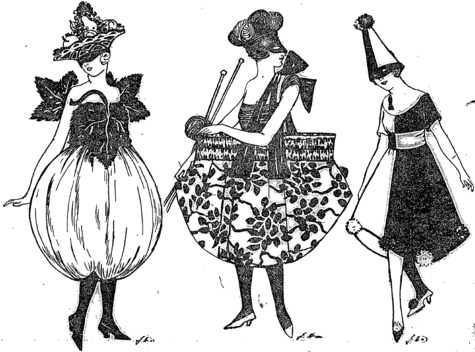 As we lift a glass of pumpkin beer while we watch our kids scarf even more candy today to celebrate Halloween, let’s take a moment to think back to a far darker and sadder Halloween, one that seemed to be the last time – ever – that you could enjoy said pumpkin beer, or any other alcohol drink whatsoever. A sad day in the history of our city, and our country.
As we lift a glass of pumpkin beer while we watch our kids scarf even more candy today to celebrate Halloween, let’s take a moment to think back to a far darker and sadder Halloween, one that seemed to be the last time – ever – that you could enjoy said pumpkin beer, or any other alcohol drink whatsoever. A sad day in the history of our city, and our country.
October 31. The city is shaking off the aftereffects of an unseasonably early snow storm. Preparations for Halloween are going strong: Kids are making costumes, planning which gates to steal, carving pumpkins. Their parents are trying to decide what dinner to go to, or scanning the newspaper for costume ideas. And the police, led by their redoubtable Major Raymond Pullmann, are preparing as well: extra police officers have been pulled into service, a ‘dry’ Halloween parade has been canceled for fear that it will cause trouble with the aggrieved ‘wets’ and, for the first time in years, they had ensured that the police court would be open through the night.
The year was 1917. A specter was haunting the United States. The specter of temperance. And in spite of its name, suggesting, as it did, a moderation of alcohol intake, it had, in fact, only one goal: The complete criminalization of all manners of alcohol.
Though it was still over two years until the passage of the 18th amendment would ban John Barleycorn – the preferred appellation for booze in those days – forever, Senator John Morris Sheppard (D-TX), who had authored the prohibition amendment, had pushed through a bill that banned alcohol in the District of Columbia. The so-called Sheppard Bone-Dry Act was to take effect at midnight on October 31, 1917. And everyone was preparing.
For most, it meant stocking up with what alcohol remained for sale, as only the transportation and sale of demon rum was to be banned, not actually owning it. More problematic was, for the Congressmen (and the sole Congresswoman, Jeannette Rankin) at the time, was whether they would be able to drink in their offices. Close reading of the Sheppard Act led lawyers to advise them that they were not above the law – public buildings, which certainly included the Capitol, were expressly forbidden to have alcohol on their premises. How much this would actually constrain their drinking was yet to be determined.

Three costumes from a October 21, 1917 article in the Washington Post entitled "A Trio of Useful Halloween Suggestions" (Washingtonpost.com)
Across the city, publicans dealt with the looming deadline as best they could: auctioning off their remaining stores, and keeping just what they needed for that evening’s custom. As it turned out, they underestimated the thirst of their customers. Most places had run out of drink by 10 PM. And those that had booze on hand tended not to have glasses, which were pilfered at an awesome rate by pubgoers who wanted one last tangible souvenir of this infamous day.
And thus, John Barleycorn died not with a bang, but a whimper. The extra police officers were allowed to go home, having arrested all of 40 revelers that evening – no more than on any other day. And the special police night court was canceled before it even began.
Instead people all across the District began plotting how best to circumvent the onerous new rules, determining the best and fastest way to journey to Baltimore for a quick snort and, in general, preparing themselves for the far more draconian rules that were swiftly headed their way, and that would culminate in prohibition being the law of the land across the country.
As to the kids, they had free reign that evening for any and all mischief, as all adults were concerned solely with their own personal loss.
